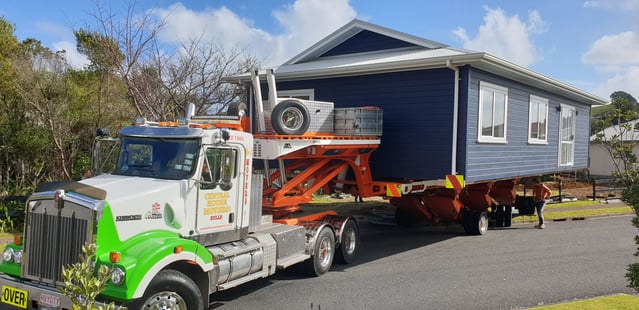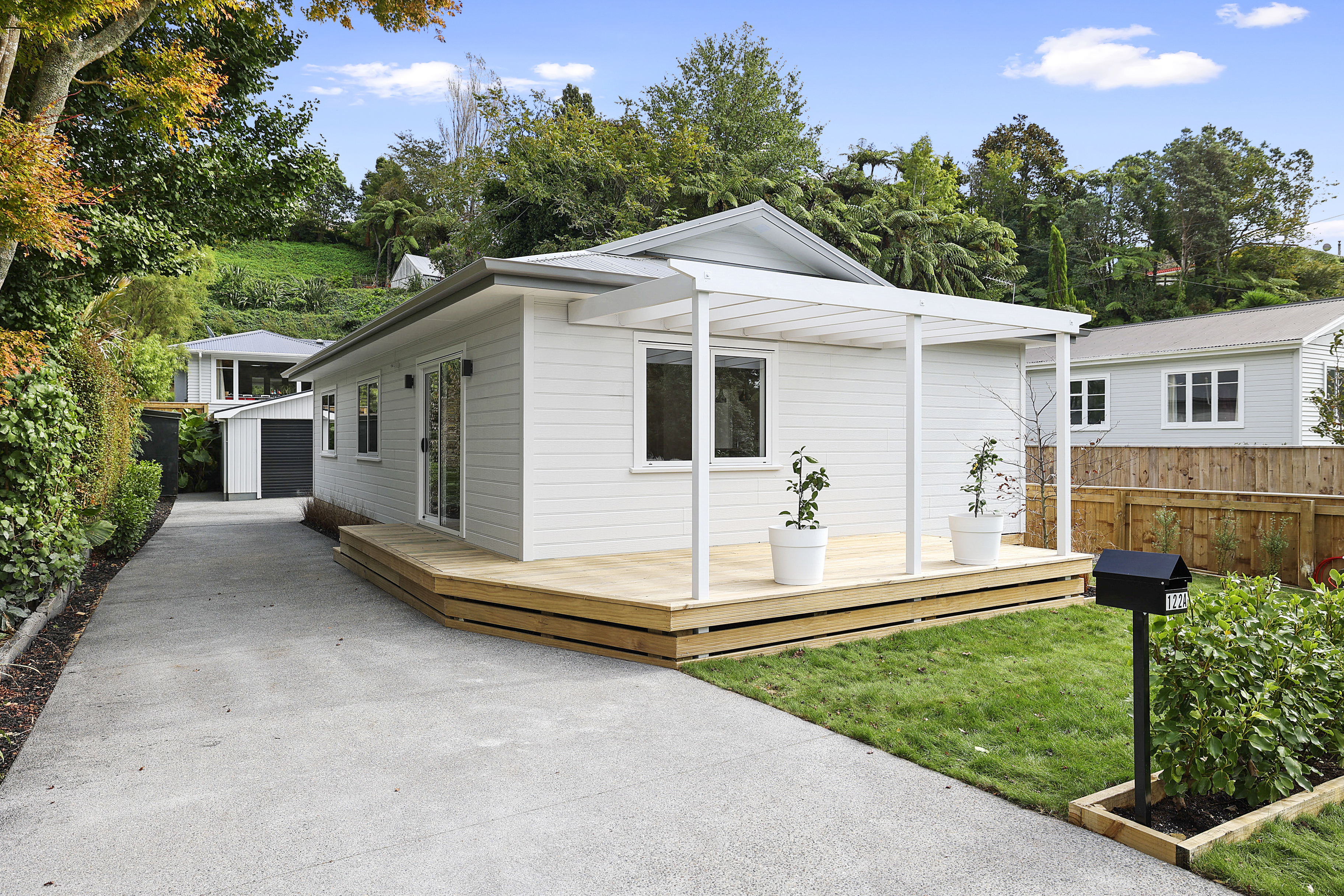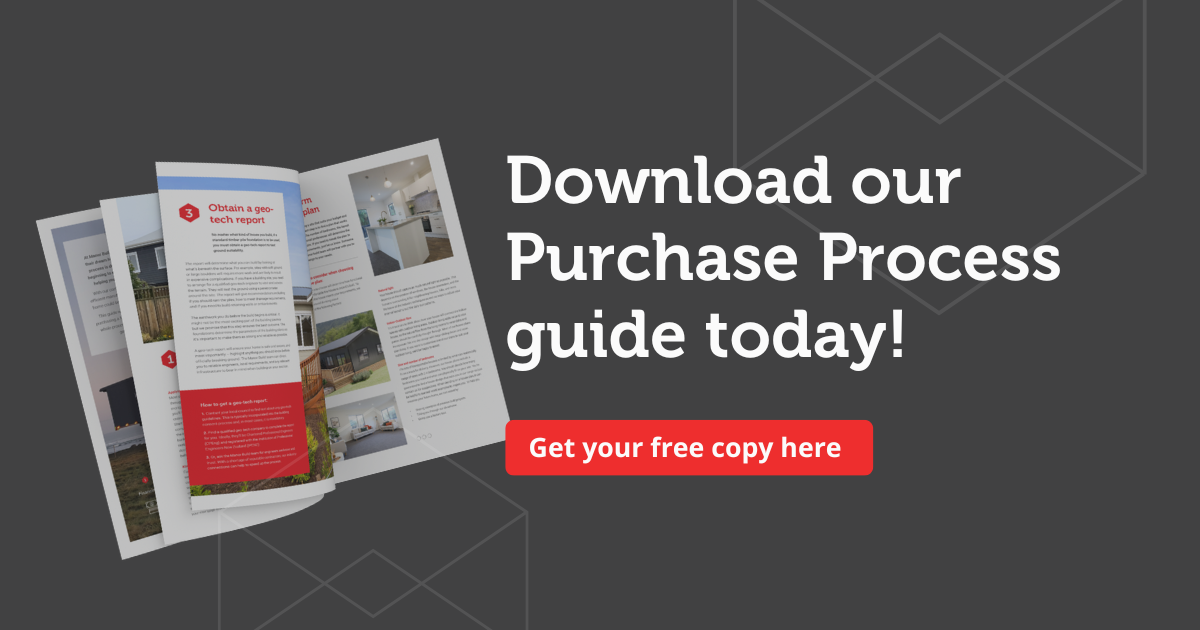What’s the process of building a prefab home?

Prefabricated homes are rapidly becoming known as a clever alternative approach to achieving the kiwi dream of home ownership. One of the key benefits is how straightforward the process can be. There are five main steps to the process — read on to see how easy it can be.
1. How to get finance for a prefab home
As with almost all real estate purchases; that is existing or new build houses, investment properties, and so forth, the prefab home purchasing process starts with securing finance.
Again, similar to all other real estate purchases — your options will depend on your situation, but will most likely involve sourcing a deposit and securing a mortgage.
While banks have historically been less willing to offer loans for buyers going down the prefab route, the tide has recently started turning. In any case, we recommend consulting with a mortgage broker and the prefab building company you plan to use right from the outset.
Kiwisaver can help
Many of the usual borrowing avenues used for existing and static new build houses still apply for prefab houses, including the likes of Kiwisaver.
Kiwisaver grants are available for particular houses, so it’s worth planning the design of your prefabricated home to meet the criteria.
The most common grant for new builds is the $10,000 available to most first-home buyers. This First Home Grant is subject to several criteria so we suggest speaking with your mortgage broker before applying.
Kāinga Ora First Home loans can reduce the deposit needed
The minimum deposit for most conventional mortgages is 20%, but Kāinga Ora has recently launched a scheme in which they underwrite first home loans, and only require a 5% deposit.
Kāinga Ora First Home Loans are issued by selected banks and lenders with the objective of making the initial deposit more affordable for first-time buyers.
Speak to those in the know about prefab financing
Financing transportable homes can require more manoeuvring, but that’s not to say it isn’t worthwhile. To save you time and maximise your chances of success, we strongly suggest engaging a mortgage broker and your chosen prefab company from the outset.
These professionals understand the lending landscape and restrictions thoroughly and can speed up your application process, forewarning you of any pitfalls, and pointing out steps you can take to make your application for prefab financing as strong as it can possibly be.
At Manor Build, we use these conversations with buyers to help us align our processes with their lender’s expectations so there are no issues meeting any conditions they may apply to their prefab loan.
2. Finding land for your prefab home
Because a delivery process is involved in building a prefabricated house in New Zealand, not all land is suitable. The main prohibiting factor is how steep or obstructed the access to the site is — will the truck and your prefab home be able to navigate the approach?
Then there’s the amount of earthworks required and covenants to think about.
Is the site accessible for a prefab home delivery?
If access to a potential site is tight, it’s important to decide whether or not this will allow you to have the house of your dreams. Are you willing to sacrifice some space and adapt your house design to fit the site, or do you want to keep looking for a more accommodating location?
Trees, power poles, hills, and road access can all impact delivery, so we recommend arranging a site visit from the Manor Build team.
We can inspect the delivery route and location and note any limitations that should be taken into account during the design process, or that would render the site completely unsuitable.
Will earthworks be a major?
As with any type of building, the contours of the proposed site will determine what level of earthworks or engineering of pile foundations is required.
Making your prefab home’s piles different lengths can accommodate moderate undulations to a point. If the site has an extreme gradient, levelling a site may require extensive earthworks and blowout costs, so chat to the Manor Build team first!
Do the site covenants allow prefabricated homes?
Before committing to the purchase of a section for your prefab home, it’s essential to check for any covenants that exclude transportable or relocatable homes from occupying the space.
The developer selling the section may want to prevent existing homes being moved there, in which case a prefabricated new build house may be exempt and perfectly okay to deliver.
Additionally, you should also check with your local council for any of the following:
-
Protected trees that can’t be moved to allow prefab home access.
-
Flood or erosion-prone areas.
-
Soft ground not suitable for foundations or delivery vehicles.
-
Buried services at the site.
Each of these factors could potentially restrict your building options, so we recommend getting a terrain survey to guarantee you know everything about the site, before it’s too late.
Getting a geo-tech report for your potential section
Regardless of the type of house you want to occupy your site, if it’s going to have a standard timber pile foundation, you’ll need to get a geo-tech report to test ground suitability.
The report examines what’s beneath the surface, e.g., soft ground, large boulders, or anything likely to require more work and expense.
If you have a building site, you need to arrange for a qualified geo-tech engineer to visit and assess the terrain.
A qualified geo-tech engineer will complete a report by testing the ground using a penetrometer around the site. Their report will include recommendations regarding anything you may need to do to prepare the site for a prefab home, i.e., pile ramming, retaining walls, etc.
3. Choosing prefab house plans
After buying a suitable plot of land it’s time to concentrate on your prefab house plan. Hopefully you already thought about the external dimensions while you were purchasing your land, so now it’s a case of working through the finer details.
The number of occupants, the layout, and your personal preferences will determine which plan you require. Manor Build designs are flexible and offer the ability to tweak plans to suit your requirements. Here are some key points to weigh up when looking at your plan:
Natural light
Maximising the flow of natural light into your home helps create a pleasant light and airy feeling. Factors that help invite natural light include:
-
The number, and positioning of windows.
-
House orientation on the section (which rooms will face north?).
-
Do any neighbouring houses, hills or trees reduce available sunlight?
We can help you find the plan and orientation that makes the most of your location’s daily sun patterns.
Indoor-Outdoor flow
Most Manor Build prefabricated house plans incorporate indoor-outdoor flow by way of large sliding doors, open-plan living, and built-in decks. This adds value to your home, makes it feel more spacious, and champions both entertaining and relaxing.
Size and shape
The size of transportable houses is limited by what can realistically fit on a truck and be delivered to your specific site. Within these parameters, we offer a range of 2-4 bedroom prefab house plans and can customise layouts to suit — contact us for suggestions.
Inspiration for your prefab home design can be drawn from real-world examples. We can assist by:
-
Sharing examples of previous build projects.
-
Taking you through our showhome.
-
Giving you a factory tour.
4. Begin the Manor Build process
Once our Manor Build clients have chosen their desired house plan, we start organising our systems to accommodate their build and sign them up for our Starter Pack, which allows us to finalise everything behind the scenes.
Paying the deposit for your Manor Build prefab home
To launch your own Starter Pack, all you have to do is pay a $5,000 deposit so we can schedule your build and begin developing your house design. The deposit is refunded from the total cost of the build, once you’ve signed up.
Meet us for an onsite consultation
After the deposit comes through, we’ll organise to meet you at your site to discuss anything else we need to know. This includes any site-specific challenges that will influence the delivery, installation, and eventual outcome.
Finalise your major house design options
Our goal is to give you options to personalise your home. That’s why, as a standard inclusion, we develop a range of variations of your chosen plan, from which you can select your favourite.
These designs consist of major elements like structure, layout, and positioning, while aesthetic finishes are determined during the upcoming contract stage.
Receiving your full quote from Manor Build
When you’re happy with the house design, we will send you a detailed quotation to outline the total fit-out of your home. These quotes are easy to understand and unlike conventional builds, you’ll know exactly what you need to pay upfront.
5. Signing the contract
When you’ve approved the plan and full quote, we’ll organise a contract that outlines the entire project in detail. It will cover any conditions and a fixed price for your new home, based on our best understanding of your requirements.
This contract is designed to protect you throughout the building process and will help with financing. If there’s anything you’d like to raise, now is the time.
A spec meeting covers finer design details
After your contract is signed and everything’s official, we’ll arrange a spec meeting with you to discuss the finer details of your Manor Build home. The spec meeting covers paint colours, power points, kitchen designs, floor coverings, and window configurations.
Once all these details are ironed out, your house can be scheduled for construction.
Get ready to move into your new home
Your new prefabricated home will be delivered to your site and ready to move into within 10-12 weeks of your construction starting at our dedicated prefab facility.
The nature of our prefabricated home model means your build isn’t subject to the usual weather and availability issues, so instead of worrying, you can focus on getting ready to move in!
Throughout this time we’ll keep you posted on construction progress and answer any questions you may have.
With that in mind… the sooner you get in touch the sooner our friendly team can deliver you your dream home. Get in touch today with any questions about our stress-free prefab build process or to get the ball rolling.
Tags: Transportable/Prefab home

.jpeg)


